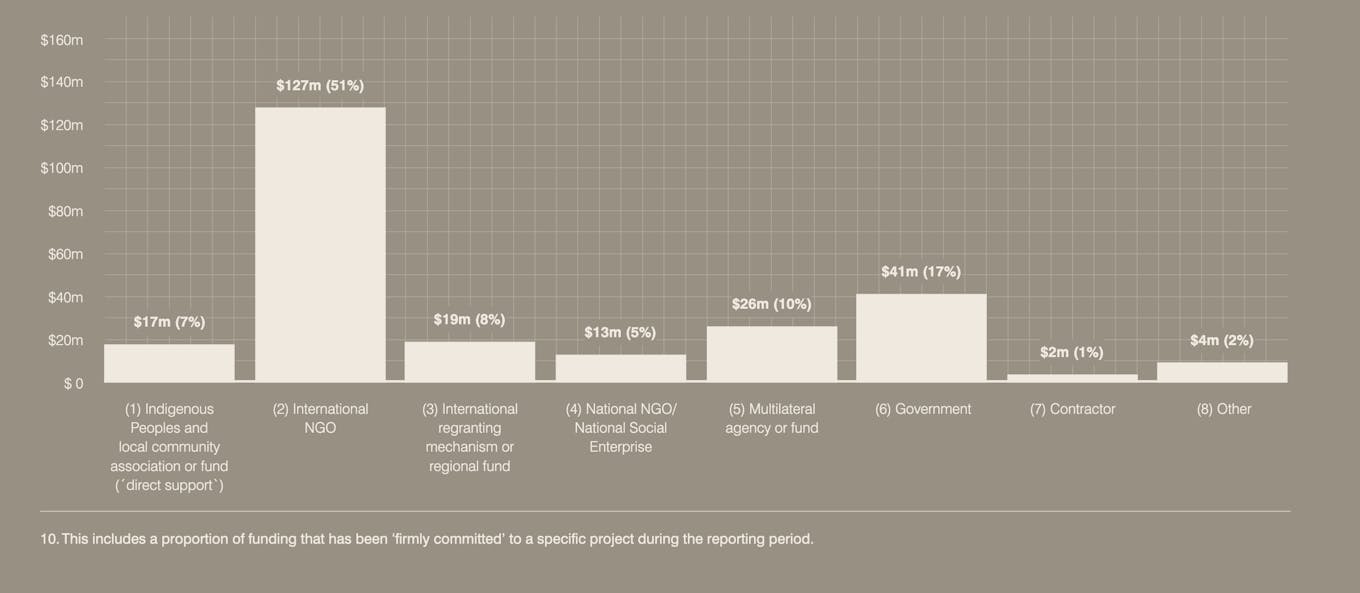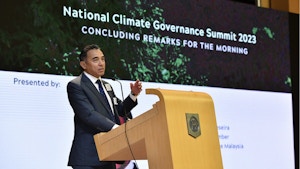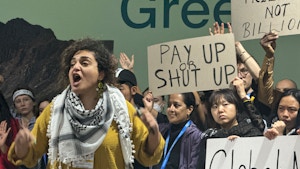A year after rich countries made a pledge of US$1.7 billion at the United Nations climate summit in Glasgow to help Indigenous peoples and local communities (IPLCs) advance their land rights and forest management by 2025, 19 per cent of the amount has been delivered.
To continue reading, subscribe to Eco‑Business.
There's something for everyone. We offer a range of subscription plans.
- Access our stories and receive our Insights Weekly newsletter with the free EB Member plan.
- Unlock unlimited access to our content and archive with EB Circle.
- Publish your content with EB Premium.
But out of the US$322 million disbursed, only 7 per cent has been channeled directly to IPLC-led groups, according to a report by the Forest Tenure Funders Group, a donor organisation backed by funders of the pledge like the government of United Kingdom and United States-based Ford Foundation.
The inability of Indigenous peoples organisations to absorb large grants explains why more than half of the funding promised by the 22 governments and private institutions, including the UK, US, Germany, Norway and the Netherlands has so far been coursed through international non-government organisations instead, said Kevin Currey, programme officer of Ford Foundation’s natural resources and climate change team, which co-authored the report.
“Few donors have the capacity to make very small grants of say US$50,000 or less. On this point, the creation of new IP&LC managed funds will help because they cannot absorb large volumes of funding,” Currey told Eco-Business.
The Forest Tenure Funders Group is reviewing how it can scale up support for such funds which will require donors to increase their engagement with Indigenous peoples to learn how they can effectively channel support to the forests they protect, the report read.

More than half of 2021 funding was delivered through international NGOs, with only 7 per cent going directly from donors to Indigenous peoples and local communities [click to enlarge]. Image: Forest Tenure Funders Group
“Few donors have the capacity to make very small grants of say US$50,000 or less. On this point, the creation of new IP&LC managed funds will help because they cannot absorb large volumes of funding,” Currey told Eco-Business.
The Forest Tenure Funders Group is reviewing how it can scale up support for such funds which will require donors to increase their engagement with Indigenous peoples to learn how they can effectively channel support to the forests they protect, the report read.
“Increasing the percentage of funding going directly to IP&LCs matters for social justice because decentralising and decolonising funding decisions builds their power and voice and supports their autonomy,” said Currey. “Communities on the ground know best what is needed to protect their forests.”
However, Currey added that just because only 7 per cent of funding is going to IPLC organisations directly, this does not mean that this is all they are receiving. The report has not been able to track where all the funds end up, but a significant portion of funding going into NGOs is regranted to local groups.
“
Increasing the percentage of funding going directly to IP&LCs matters for social justice because decentralising and decolonising funding decisions builds their power and voice and supports their autonomy.
Kevin Currey, programme officer, natural resources and climate change team, Ford Foundation
Recent studies have laid out the critical role Indigenous peoples play in protecting endangered tropical forests, major storehouses of carbon. In a recent report, an expert panel advising UN climate negotiators cited the urgent need to recognise Indigenous peoples’ rights and to support Indigenous knowledge-based adaptation, calling them “critical to reducing climate change risks and effective adaptation.”
Despite the crucial role they play in safeguarding nature, an assessment made last year found that financing to secure Indigenous peoples customary land rights is lagging. Between 2011 to 2020, only 11 per cent of funding was given to projects that empower locals and support forest management.
Indigenous peoples have fought for their rights more publicly in recent years, at the risk of increased persecution. In 2020, a record number of people were killed for protecting their land, with more than a third from local communities.
Not all Indigenous peoples want direct funding
There are IPLC groups who do not want to receive funding directly because they lack the capacity to manage and report on donor funds, which can be a complicated and tedious process, said Currey.
Indigenous peoples do not commonly value money as currency, with wealth usually perceived in non-monetary terms, such as caring for family and community.
As such, there are those who prefer to partner with NGOs or other intermediaries to assist them in the technicalities of fund management.
For instance, Indonesian non-profit Komunitas Konservasi Indonesia Warsi relies on a US-intermediary to increase its capacity to scale grant-making to Indigenous groups in Indonesia.
Non-profit Climate and Land Use Alliance (CLUA) makes grants and engages the international public and private sector for programmes that help conserve forests and lands in Brazil, Mexico and Central America as well as Indonesia.
The alliance also provides technical assistance to local IPLC-led organisations to determine whether or not they want to engage in carbon markets, a scheme where corporations are allowed to partially meet their climate targets by buying carbon credits that represent emissions cuts made elsewhere.
Currey said: “Because these groups provide useful strategic or technical support and connections to broader networks, and because, this reduces the burden that comes with managing and reporting on donor funds. But, this should be a decision that IPLCs participate in, not one that is made for them.”














